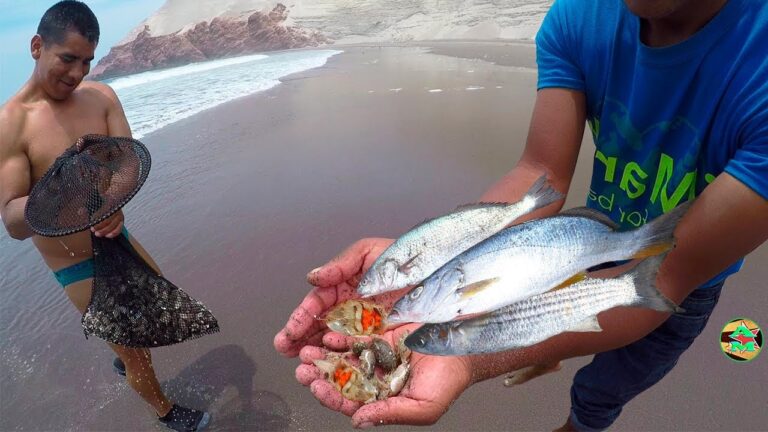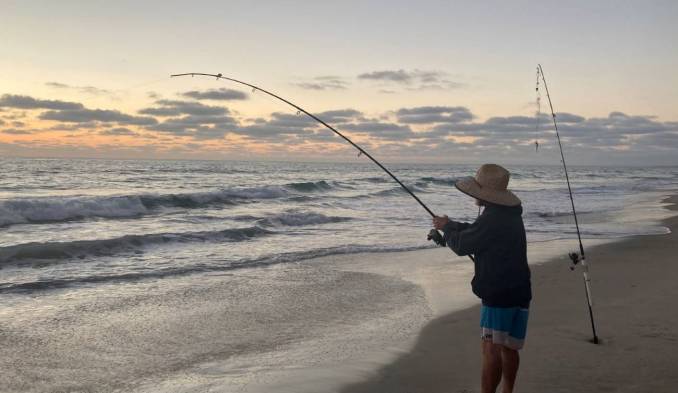Best Freshwater Lures & Baits for Fishing: Hook into Big Catches with These Proven Powerhouse Picks!
The best freshwater lures and baits for fishing include crankbaits, spinnerbaits, soft plastic worms, and live bait such as minnows or nightcrawlers. Looking to catch more fish in freshwater?
You’ll need the right lures and baits to attract them. Whether you prefer artificial or live bait, there are several options that have proven to be effective. Crankbaits, with their lifelike swimming action, are great for imitating injured baitfish. Spinnerbaits, with their flashy blades, work well in murky water.
Soft plastic worms, especially in natural colors, can entice even the most finicky fish. And if you prefer live bait, minnows or nightcrawlers can be irresistible to hungry fish. By choosing the right lure or bait for the conditions and the type of fish you’re targeting, you’ll increase your chances of landing a big catch.
Topwater Lures: Making A Splash In Freshwater Fishing
Freshwater fishing enthusiasts are always on the lookout for effective lures and baits that can entice game fish to strike. Among the various types of lures available, topwater lures have gained popularity for their ability to create an irresistible temptation for freshwater species. Whether you’re an experienced angler or a beginner, incorporating topwater lures into your fishing arsenal can greatly increase your chances of landing that trophy catch.
How Topwater Lures Create Irresistible Temptation
Topwater lures are designed to imitate injured baitfish, frogs, or other surface-dwelling creatures that game fish instinctively target. With their unique design and action, these lures generate commotion and vibrations on the water’s surface, mimicking the actions of wounded prey. These irresistible movements trigger predatory instincts in fish, causing them to strike with aggression and force.
Choosing The Right Topwater Lure For Different Conditions
When it comes to selecting the most effective topwater lure for your fishing expedition, several factors should be taken into consideration, including environmental conditions and the target species. Different lures excel in different situations, such as calm waters, choppy waves, or weedy areas. Here are some popular types of topwater lures and their ideal conditions:
| Type of Topwater Lure | Ideal Conditions |
|---|---|
| Poppers | Calmer waters and clear conditions |
| Walk-the-Dog Lures | A bit of wind or surface disturbance |
| Frogs | Weedy areas or areas with vegetation cover |
| Prop Baits | Choppy waves or rougher conditions |
Pro Tips For Working Topwater Lures Effectively
Working a topwater lure requires a bit of finesse and skill. Here are some pro tips to help you maximize its effectiveness:
- Cast near structure: Fish often seek shelter near submerged objects or structures. Cast your topwater lure close to these areas for better chances of attracting a strike.
- Experiment with retrieval speed and action: Vary your retrieve speed and action to imitate different prey movements. Quick and erratic retrieves can mimic an injured prey, while steady and slow retrieves can imitate a frog or wounded baitfish.
- Use pauses and twitches: Introduce pauses and twitches during your retrieve to create more lifelike actions. These moments of stillness can entice fish that are closely observing the lure.
- Observe the surroundings: Pay close attention to any signs of fish activity or feeding patterns. Look for ripples, boils, or fish breaking the surface. Targeting areas with fish activity increases your chances of success.
- Timing is key: Topwater lures are often most effective during low-light conditions, such as early morning or late evening. However, they can still produce bites throughout the day. Adjust your fishing schedule accordingly for optimal results.
By following these pro tips and using the right topwater lure for the conditions, you’ll be well on your way to enjoying an exhilarating freshwater fishing experience. Remember, practice makes perfect, so don’t be discouraged if you don’t get instant results. Experiment, learn from each outing, and soon you’ll be reeling in the catches of a lifetime.
Swimbaits: The Versatile Allure For Freshwater Fish
If you’re an avid angler, you know the importance of having the right lures and baits to entice freshwater fish into biting. While there are many options available, one type of bait that consistently delivers impressive results is the swimbait. With its lifelike action and versatility, swimbaits provide an irresistible allure for a wide range of freshwater fish species. In this article, we will delve into why swimbaits are a go-to choice for fishing success, how to select the ideal swimbaits for specific fish species, and techniques to maximize their effectiveness.
Why Swimbaits Are A Go-to For Freshwater Fishing Success
When it comes to luring in freshwater fish, swimbaits consistently prove their worth. These baitfish imitations are designed with a realistic swimming action that mimics the natural movement of prey in the water. This lifelike motion is particularly effective in fooling predatory fish, as it triggers their instinctual response to strike. Whether you’re targeting largemouth bass, pike, muskies, or walleye, swimbaits offer a tantalizing presentation that can’t be ignored. Additionally, swimbaits come in a variety of sizes, colors, and styles, allowing you to match the baitfish species prevalent in your local fishing spot, further increasing your chances of enticing a strike.
Selecting The Ideal Swimbaits For Specific Fish Species
When selecting swimbaits for specific fish species, it’s important to consider their preferred forage and behavior. Different fish species have varying preferences in terms of the size, color, and action of the bait. Below, we’ve compiled a table outlining some popular freshwater fish species and the swimbaits that are known to be successful in tempting them.
| Fish Species | Ideal Swimbaits |
|---|---|
| Largemouth Bass | Soft plastic paddle tails, realistic shad imitations |
| Pike | Large jointed or multi-segmented swimbaits |
| Muskies | Big, hard-bodied swimbaits with wide wobbling action |
| Walleye | Natural-looking paddle tails, slender minnow imitations |
Techniques To Maximize The Effectiveness Of Swimbaits
To ensure you get the most out of your swimbaits, it’s essential to employ effective techniques that increase their appeal to freshwater fish. Here are some techniques to consider:
- Retrieve speed: Experiment with different retrieval speeds, as fish may be more responsive to a slow or fast presentation depending on various factors such as water temperature, fish activity, and lure action.
- Vary depths: Fish can be at different depths depending on the time of day and weather conditions. Adjust your swimbait’s depth by using weighted hooks, sinkers, or adding split shots to the line.
- Imitate injured baitfish: When retrieving your swimbait, impart subtle twitches or jerks to mimic the erratic movements of an injured or distressed baitfish, triggering a predatory response.
- Target structure: Fish tend to gather around structures such as rocks, fallen trees, and weed beds. Cast your swimbait near these areas to increase your chances of a catch.
- Experiment with colors: Different water conditions can affect how fish perceive colors. Try using swimbaits in various hues, such as natural shades in clear water and brighter colors in murky conditions.
A successful fishing trip often boils down to having the right lures and baits in your tackle box. Swimbaits offer anglers a versatile and effective option for targeting a wide range of freshwater fish species. By understanding why swimbaits are a go-to choice for fishing success, selecting the ideal bait for specific fish, and employing effective techniques, you can maximize your chances of a memorable fishing adventure.
Soft Plastic Baits: The Secret Weapon For Freshwater Anglers
Unveiling The Versatility Of Soft Plastic Baits
Soft plastic baits are the secret weapon in the arsenal of freshwater anglers. Their incredible versatility makes them a go-to choice for any fishing situation. These lifelike imitations are designed to mimic the appearance and movements of real baitfish, worms, crustaceans, and other aquatic creatures. Soft plastics can be rigged in multiple ways and combined with various techniques to attract a wide range of freshwater fish species.
Identifying The Best Soft Plastic Baits For Various Situations
When it comes to soft plastic baits, the options are seemingly endless. Each bait serves a specific purpose, so it’s important to know which ones to choose depending on the situation you’re facing. Here are some of the best soft plastic baits to consider:
| Bait Type | Best Fishing Situations |
|---|---|
| Worms |
|
| Creature Baits |
|
| Swimbaits |
|
These are just a few examples, but there is a soft plastic bait out there for every fishing scenario you can imagine. By identifying the specific conditions and target species, you can select the perfect soft plastic lure to enhance your chances of success.
Mastering The Presentation And Retrieval Techniques
Once you’ve chosen the right soft plastic bait, it’s important to master the presentation and retrieval techniques to maximize its effectiveness. Here are a couple of tips to keep in mind:
- Vary your retrieve speed: Experiment with fast and slow retrieves to see how your target fish respond. Sometimes a slow, subtle movement can be more enticing, while other times a fast and erratic retrieval will trigger a strike.
- Use natural movements: Soft plastics excel in imitating the natural movements of real prey. Incorporate twitches, pauses, and erratic movements to make your bait come to life.
- Try different rigging techniques: Soft plastic baits can be rigged in various ways, such as Texas rigs, Carolina rigs, or drop-shot rigs. Each rigging technique offers a different presentation and can be effective in specific situations.
By honing your presentation and retrieval skills, you can make your soft plastic bait irresistible to freshwater fish. Practice makes perfect, so don’t be afraid to experiment with different techniques until you find what works best for you.
Crankbaits: Diving Into Success In Freshwater Fishing
When it comes to freshwater fishing, one of the most effective lures to use is crankbaits. These small, hard-bodied lures can mimic the appearance and movement of prey fish, making them irresistible to predatory species like bass, trout, and walleye. In this article, we will dive into the world of crankbaits and explore their winning features, how to choose the right ones, and tips and tricks to optimize their performance.
Understanding The Winning Features Of Crankbaits
Crankbaits come in a wide variety of shapes, sizes, and colors, but they all share a few key features that make them so successful in freshwater fishing:
- Their diving lip: One of the defining characteristics of a crankbait is the small, plastic lip attached to its front. This lip causes the lure to dive when retrieved, allowing it to reach different depths in the water column.
- Built-in rattles: Many crankbaits are designed with built-in rattles that produce noise and vibrations as the lure moves through the water. This imitates the sounds made by injured or fleeing baitfish, attracting curious predators.
- Natural swimming action: Crankbaits are designed to mimic the erratic movement of wounded baitfish, darting and wobbling through the water. This realistic swimming action triggers predatory instincts in fish, enticing them to strike.
- Realistic finishes: Crankbaits often feature lifelike finishes that mimic the colors and patterns of real fish. This attention to detail helps fool wary fish into thinking the lure is a genuine meal.
Demystifying The Art Of Choosing The Right Crankbaits
Choosing the right crankbaits can seem overwhelming due to the sheer number of options available, but it doesn’t have to be a daunting task. By considering the following factors, you can narrow down your choices and increase your chances of success:
| Factor | Consideration |
|---|---|
| Depth range | Select crankbaits with the appropriate diving depth to match the water you’ll be fishing in. This ensures the lure reaches the strike zone of the target species. |
| Type of prey fish | Observe the prevalent baitfish species in your fishing spot and choose crankbaits that closely resemble their size, shape, and colors. This helps fool the fish into thinking it’s an easy meal. |
| Water conditions | Consider the visibility, clarity, and color of the water. Opt for brighter colors in murky conditions and more natural or subtle finishes in clear water. |
| Fish behavior | Take into account the mood and feeding patterns of the fish you’re targeting. Use lipless crankbaits for aggressive or active fish, while silent crankbaits work well for more cautious or less active fish. |
Tips And Tricks To Optimize Crankbait Performance
To maximize your success with crankbaits, keep these tips and tricks in mind:
- Vary your retrieve speed: Experiment with different retrieval speeds to find what triggers the most strikes. Sometimes a slow, steady retrieve works best, while other times a faster, erratic retrieve may be more effective.
- Pay attention to depth: Adjust your lure choice to target fish at their preferred depth. Use a crankbait with a smaller diving lip to fish shallower areas, and opt for crankbaits with larger lips to reach deeper water.
- Work the structure: Crankbaits excel at fishing around structure like rocky banks, submerged logs, and weed beds. Use your lure to mimic the movements of natural baitfish in and around these areas to entice fish to strike.
- Experiment with colors: Don’t be afraid to try different colors and patterns until you find what works best on a particular day. Certain colors may trigger more strikes depending on the weather, water conditions, and the species you’re targeting.
By understanding the winning features of crankbaits, demystifying the art of choosing the right ones, and using tips and tricks to optimize their performance, you’ll be well on your way to reeling in more fish on your next freshwater fishing adventure.
Jigs: The Precision Tool For Freshwater Anglers
Unleashing The Power Of Jigs In Freshwater Fishing
When it comes to freshwater fishing, jigs are a go-to lure for many seasoned anglers. The versatility, precision, and effectiveness of jigs make them an essential tool in the tackle box. Unlike other lures, jigs are designed to imitate prey that freshwater game fish feed on, making them irresistible to bass, walleye, pike, and other species. With their realistic appearance and natural movement, jigs have the ability to entice even the most cautious freshwater predators.
Navigating The Types And Styles Of Jigs For Different Conditions
The world of jigs encompasses a wide range of types and styles, each suited for different fishing conditions. Whether you’re fishing in clear water, murky water, or heavy cover, there’s a jig that can help you maximize your chances of success. Here are some popular types of jigs and their respective benefits:
- Football Jigs: Perfect for dragging along rocky bottoms and mimicking crawfish, football jigs excel in clear water. Their unique head shape allows them to stand upright on the bottom, creating an enticing presentation for bass and other bottom-dwelling fish.
- Swim Jigs: Designed with a streamlined head and wire guard, swim jigs are ideal for fishing in shallow vegetation and around submerged structures. Their flashy skirts and weedlessness can trigger aggressive strikes from bass during the warmer months.
- Flipping Jigs: When targeting heavy cover or flipping into thick vegetation, flipping jigs are your best companions. With their bulky heads and stout hooks, they can penetrate dense cover and provoke reaction bites from lurking fish.
Mastering The Art Of Jig Fishing Techniques
To fully unlock the potential of jigs, it’s essential to master the art of jig fishing techniques. Here are a few techniques to get you started:
- Pitching: This technique involves accurately casting the jig into specific targets, such as brush piles, fallen trees, or docks. With a short underhand motion, the jig can be precisely placed and presented to potential feeding areas.
- Hopping: By imparting short, quick hops to the jig, you can create a lifelike action that mimics a wounded baitfish or crayfish. This technique is perfect for imitating the natural movements of prey and triggering predatory instincts in freshwater game fish.
- Dragging: Slowly dragging the jig along the bottom is an effective way to entice sluggish fish, particularly in colder water. Paying attention to subtle changes in bottom composition or structure can lead to successful hookup opportunities.
Conclusion
Overall, the right choice of freshwater lures and baits is crucial for a successful fishing experience. By understanding the preferences of different fish species and the conditions of the fishing location, anglers can select the most effective options. Whether it’s crankbaits, soft plastics, or live bait, the key is to match the lure or bait with the natural prey of the fish.
So, grab your gear, experiment with different options, and get ready to reel in those impressive catches! Happy fishing!




